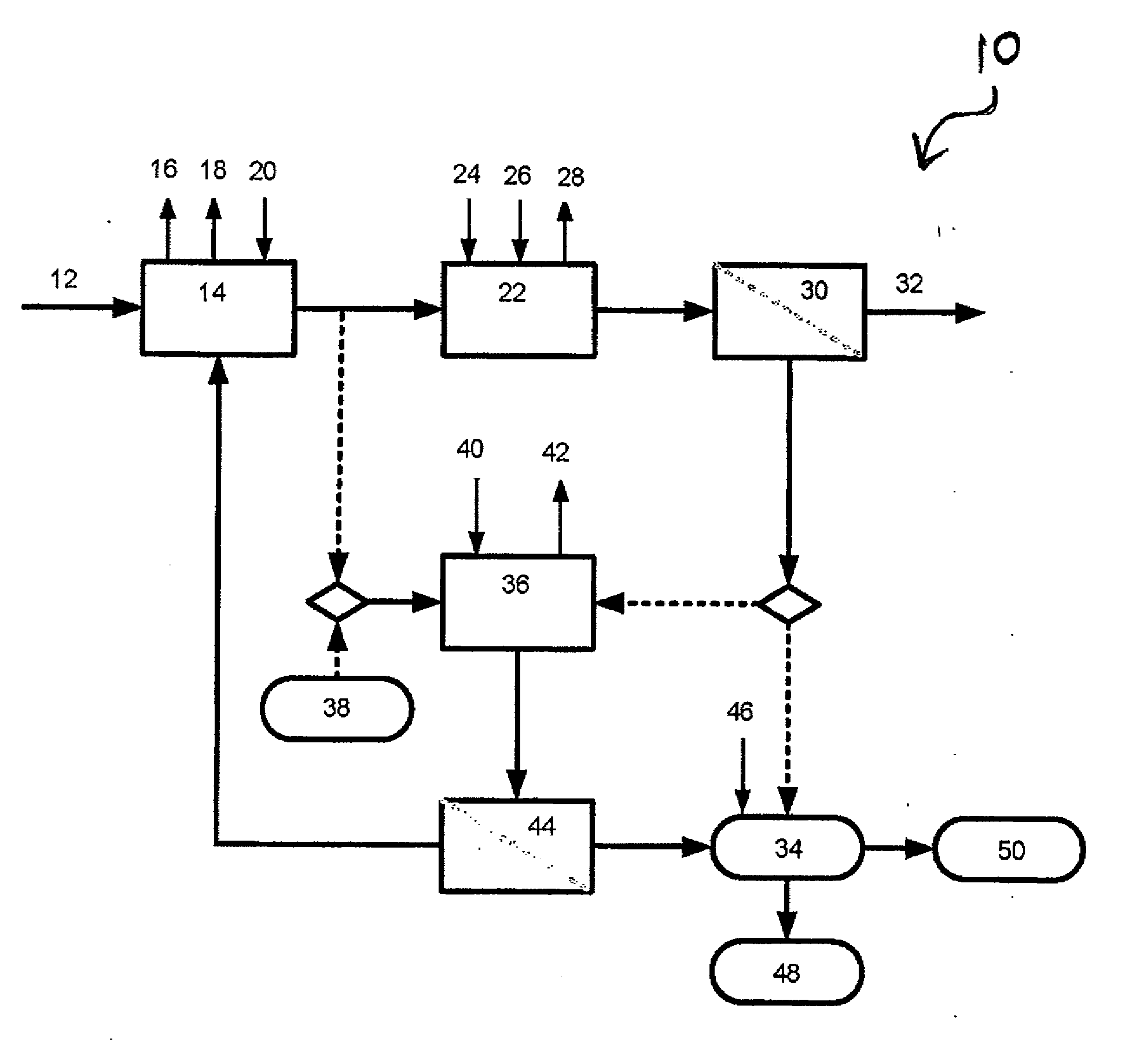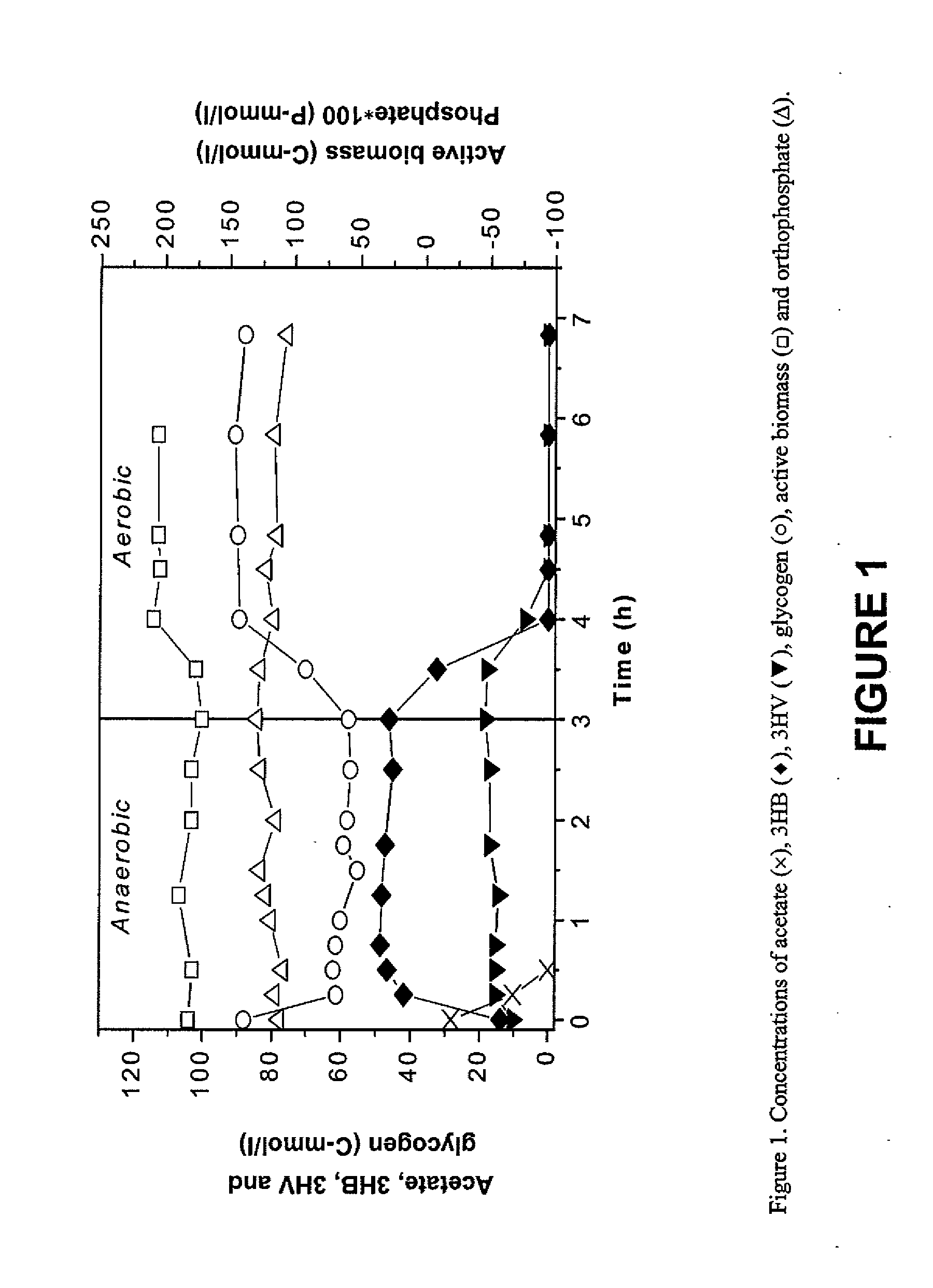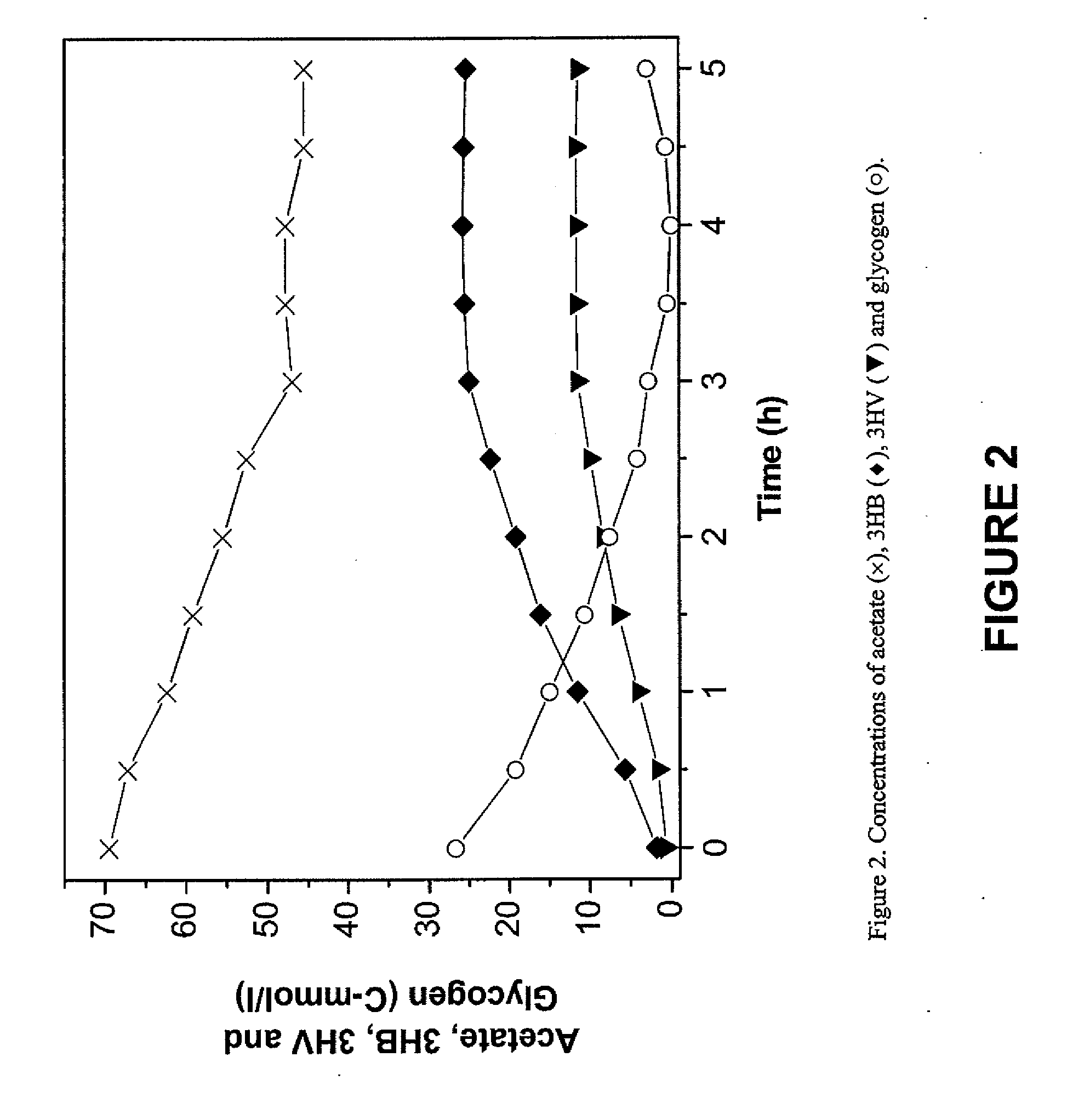Process for Maximizing PHA Production in Glycogen Accumulating Organisms
a technology of glycogen accumulation and biomass, which is applied in the field of process for increasing the production of pha in a mixed culture biomass, can solve the problems of limited broad application of pha polymers, high production costs associated with traditional pha production carried out with pure microbial cultures, etc., and achieves high loading ratio of vfa to biomass, high amount of pha, and high level of intracellular glycogen
- Summary
- Abstract
- Description
- Claims
- Application Information
AI Technical Summary
Benefits of technology
Problems solved by technology
Method used
Image
Examples
Embodiment Construction
[0011]Polyhydroxyalkanotes (PHAs) are a group of biopolymers synthesized in bacteria as intracellular carbon and energy reserves. One group of organisms found in biomass, termed glycogen accumulating organisms (GAOs), produce PHAs under certain conditions. GAOs metabolize external sources of carbon, usually volatile fatty acids (VFAs) and store the carbon in the form of PHAs.
[0012]The present invention involves increasing PHA production in mixed cultures enriched in GAOs. The process described herein may include at least three stages. In the first stage, organic matter comprising the substrate is converted into volatile fatty acids (VFAs). The second stage is a GAO selection process that uses alternating anaerobic-aerobic conditions and consumes the VFAs during the anaerobic period. Although VFAs are generally viewed as preferred substrates for GAOs, other types of organic compounds may also serve as substrates. In this stage the GAOs grow and proliferate, and come to dominate the b...
PUM
 Login to View More
Login to View More Abstract
Description
Claims
Application Information
 Login to View More
Login to View More - R&D
- Intellectual Property
- Life Sciences
- Materials
- Tech Scout
- Unparalleled Data Quality
- Higher Quality Content
- 60% Fewer Hallucinations
Browse by: Latest US Patents, China's latest patents, Technical Efficacy Thesaurus, Application Domain, Technology Topic, Popular Technical Reports.
© 2025 PatSnap. All rights reserved.Legal|Privacy policy|Modern Slavery Act Transparency Statement|Sitemap|About US| Contact US: help@patsnap.com



